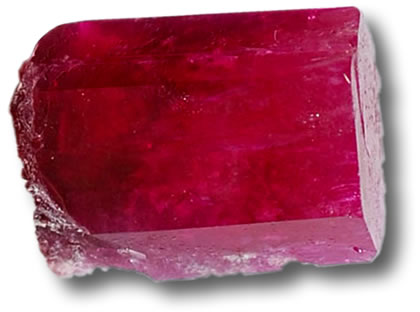Red Beryl, aka Bixbite
Some information about Red Beryl, Red Emerald, Bixbite

Red Beryl occurs as hexagonal crystals which is typical of beryls. The refractive index is 1.564-1.574 and the specific gravity is 2.66-2.70. It's primary chemical composition is Be3Al2SiO3, but there are traces of many other elements.
Red Beryl is thought to have formed along fractures, in cavities or within the host rhyolite from a high-temperature gas or vapor phase released during the latter stages of cooling and crystallization of the rhyolite magma. Rhyolites ordinarily lack gem minerals and beryls of any sort is extremely uncommon, therefore the presence of Red Beryl suggests some unusual conditions for gemstone formation.
The annual yield of red beryl from the mines is only about 5,000 to 7,000 carats a year, when they are actively being worked. The gem has been marketed as "red emerald," (this name is misleading) and touts it as one of the rarest gemstones in the world. Prices can run as high as $10,000 a carat for top clarity cut gemstones. Most red beryl gemstones are under 1/2 a carat in weight, and 2 to 3 carat stone would be considered very large and have a value of over $20K per carat for top clarity gems.
Some of the red gems being sold in the market as red beryl or bixbite are actually Pezzottaite, a new gem variety discovered in Madagascar. Pezzottaite is also very rare -- but not yet as valuable as bixbite -- but is a different mineral altogether, with a different chemical composition, density and refractive index. A new find of pezzottaite in Afghanistan has made this new gemstone more widely available. Red beryl is so rare that it is wise to always insist on certification from a recognized gemological lab when buying this gemstone, since there is also much in the way of lab grown synthetic gems in the market.







